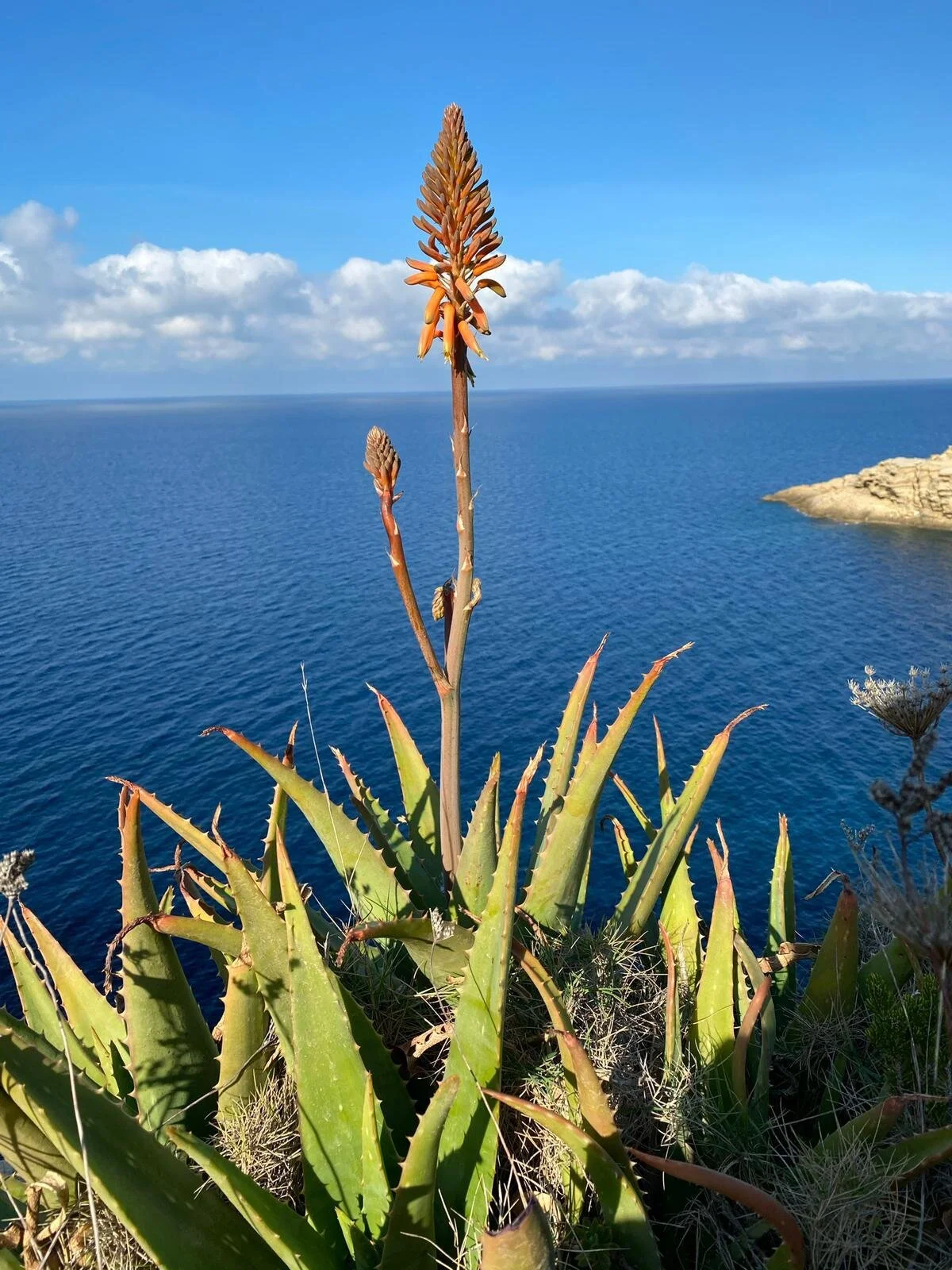Anna Skladmann on ‘The Almond Trees Project’
Artist Anna Skladmann. Photography by Cedric Bardawil for IKEBANA projects.
Meet Anna Skladmann, London-based artist we collaborated with on 'The Almond Trees project’. Her unique practice combines photography and scanning techniques to reflect on aspects of contemporary life as well as explore notions of nature and society. Following an online art residency with the Japanese Ikebana artist Makiko Morange, Skladmann immersed herself in the philosophy of ikebana, practiced this ancient art form and transformed it through the perspective of her work.
You started as a documentary photographer focused on social issues. How did the theme of flowers initially appear in your work?
It was when I started my MA at the Royal College of Art where I wanted to find a new way of story-telling with social issues as the main focus point. I found a structure in Berlin called 'Der Schwerbelastungskörper' - 'The Heavy Load-Bearing Body'. It was built by Hitler's chief architect Albert Speer to determine the feasibility of constructing the Third Reich's largest building on the area's marshy, sandy ground and check if the soil can hold this inhumanly massive plan. It has a cylinder shape with a diameter of 11m that reaches 18.2m into the ground and remains one of the few remaining vestiges of Adolf Hitler's plans. Plants and Flowers were planted all around it to let it overgrow and render its history obsolete. I started to visit this place over and over again in different seasons to collect the flowers and plants growing around it, scanning them and working with a botanist to reveal their origin. We found out that none of these plants are native to their soil.
What attracts you in flowers? Their symbolism? Temporality? Or something else?
I love the revelation of the cycle of life in each and every flower, everything from its buds to the bloom and their falling petals: their microscopic traces of stories within their organic flesh that imprint nature as a testimony of what is and will ever be.
You mentioned that one of the inspirations behind ‘Almond Trees’ series was Van Gogh’s Almond Blossom. Can you tell us more about it?
Large blossom branches against a blue sky were one of Van Gogh’s favourite subjects: Almond trees flower early in the spring making them a symbol of new life. Van Gogh borrowed the subject, the bold outlines and the positioning of the tree in the picture plane from Japanese printmaking.
This year I have spent early spring on the island of Ibiza, working from a small remote studio and the white and pink buds of the Almond Blossom were the first flowers to emerge in springtime. There were fields filled with Almond Trees across the island ranging from all different hues of white and pink. Slowly emerging on the thick branches of the tree, the blossoms soon followed and unfolded their true beauty in each delicate petal that bloomed. The petals are very delicate, often flying away in the slightest gasp of air. After about two weeks the whole island was covered in a rain of petals once their journey had descended back on the earth, into the soil where they came from. They captured my attention magnetically, I didn't know yet that I was also growing a new life inside of me.
Your unique technique has a lot to do with reinterpreting the idea of space. How did this concept unfold in the ‘Almond Trees’ project?
I'm fascinated by the notion of the container and space in Ikebana teachings. When I was thinking about creating the Almond Trees project I wanted to capture the essence of the large blossom branches reflecting against the blue sky, the philosophy of imagining my scanner as a container really shifted my perception from my previous works. I stopped thinking about filling up the space and adopted the philosophy of 'less is more' and started to give the container (aka my scanner) more breathing space.
Has the teaching of Ikebana influenced your vision of working with natural materials?
Completely. I worked with nature for the past five years and couldn't quite translate the anthropomorphic state of mind that these flowers and plants adopted in my work. Once I started to learn more about Ikebana, I understood that my impact on these flowers is in the arrangement, the cutting and leaving out. I love the quote ' Ikebana reflects the person who arranged it', finally it all started making sense to me and came full circle.
Going forward do you think it might add a new angle to your photographic practice?
Yes, I think once you have learned the art of Ikebana (and I'm only in the beginning of my studies), it's a mind set that wants to be nurtured and grow. It feels like a seed has been planted into my brain and vision and will expand from now on.
What is the most striking thing you learned about Ikebana?
The deep communion and co-existing we as humans have with nature.









